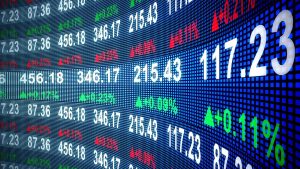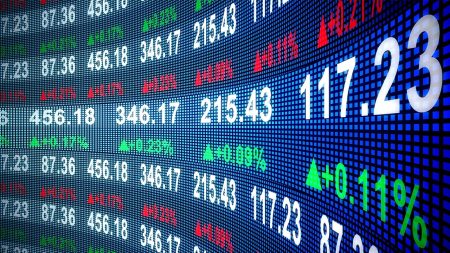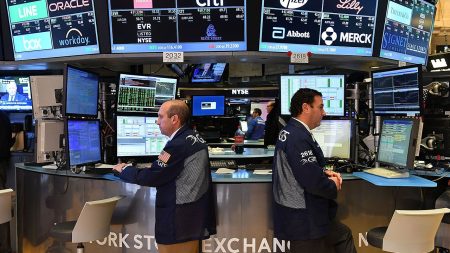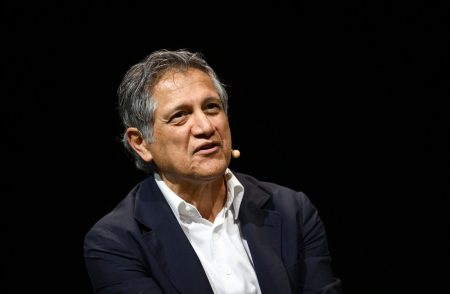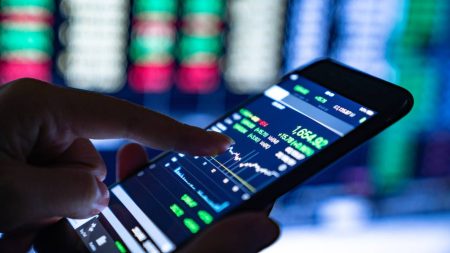Futures and options are types of financial derivatives that provide the right to buy or sell other securities, such as stocks, bonds and commodities. They’re called derivatives because the price of futures and options relies on that of the underlying securities they represent.
Both futures and options let investors and others “lock in” a price for the underlying security, creating greater certainty. And they can both be highly profitable ways to trade in the public markets, though they offer tremendous risk and are best suited to experienced traders.
Here’s how futures and options work, and their key differences.
What are futures?
Futures are a kind of contract that gives the owner the obligation to purchase a commodity or other good or security at a specific future date. The seller of the futures contract is obligated to deliver these items at that future date. Once that date is reached, the contract is settled and ceases to exist, and the contract’s owner pays and takes delivery of the items from the seller.
That said, many futures are traded speculatively to make a profit, without any intention of either side actually delivering or receiving the underlying items. The owner or seller of futures can just close the position by buying or selling the appropriate contract. In this case, the trader’s profit is simply the sales price of the futures contract minus the purchase price less any commissions.
Futures can cover a wide variety of deliverables, including commodities such as oil and corn as well as interest rates, metals, currencies and the level of indexes such as the S&P 500. Futures contracts typically trade on a public exchange, and a clearinghouse acts as an intermediary to ensure the timely settlement of contracts between buyer and seller.
To establish a futures contract, traders must put up a portion of its total value called margin, often 3 to 12 percent. The clearinghouse holds this capital as security for the contract. As the contract’s value changes over time, the buyer or seller may have to add more money to the account to meet the minimum margin requirement or otherwise have the contract closed.
Following the close of trading each day, the clearinghouse figures the accounts between buyer and seller. If the contract rose in value, cash from the seller’s margin account is moved to the buyer’s account. If the contract fell, then the clearinghouse moves money to the seller. If either counterparty goes below the minimum margin requirement, they’ll have to deposit cash to meet the minimum requirement if they want to continue holding the futures position.
When the delivery date arrives, the seller delivers the good and the buyer receives it under the terms of the contract. In some cases, the buyer takes physical delivery and delivers cash, but many futures contracts specify that they’ll be settled with cash only, not with delivery of the good.
Futures are attractive to traders because they allow them to use leverage, taking on a bigger position than they can immediately afford while enjoying all the upside (or downside) on it. So traders can make enormous profits if the market moves in a favorable direction.
Who trades future contracts?
Futures contracts can be a valuable financial instrument that mitigate and spread risk to those who are willing to be compensated for accepting it. Those who might buy or sell futures contracts include:
- Speculators: Speculators may be looking to trade futures because of the potential for significant profits, but they’re taking risk from those looking to unload it.
- Farmers and agribusiness: Futures allow crop producers to spread the risk of a poor harvest or lower future prices by selling part of their future crop today, with the promise to deliver it later. That locks in some gains for them and may generate much-needed cash.
- Other commodities producers: Similarly, energy companies may want to sell some of their production today while prices are good, rather than risk the potential volatility of later.
- Consumer-goods companies: Packaged-goods companies may want to be sure they have the raw material that they need at a price they’re comfortable with. So they’ll buy futures to be sure that they have their raw inputs later when they need them. It’s a similar story for other firms that rely on commodity inputs such as energy, including airlines.
- International companies: Businesses with operations in different currency regions may want to use futures to hedge their exposure to swings in currency.
By using futures, these financial players can help reduce risk and pay others to take it on. And that helps businesses deliver goods and services at a reasonable price and without delays. Futures can help hedge exposure to various risks, reducing an investment portfolio’s volatility.
Example of futures trading
You could speculate on oil futures using the crude oil futures contract (code: CL) traded on the New York Mercantile Exchange. The contract represents 1,000 barrels of West Texas Intermediate oil and specifies physical delivery of the oil.
To establish your position you’ll need to meet the initial margin requirements, but to hold it, you’ll need to meet the maintenance margin. Currently TradeStation prices the contract’s maintenance margin at $6,039, while a contract for delivery a year out is priced around $75 recently. That’s the price per barrel you’ll pay for the 1,000 barrels of oil on the delivery date in a year. And for every contract you want to hold, you’ll need to meet this minimum margin requirement.
In other words, you’ll need to put up about 8 percent of the total value of the contract, for now.
If the price of the contract rises to $90 in a week, you’ve made a profit, but how much? Subtract the price of your original contract and multiply by the amount of the deliverable (1,000 barrels of oil here). That’s a profit of $15,000, not counting commissions and other exchange fees. You can even take cash out of your account as long as you maintain that minimum margin amount.
However, if the price of the contract falls to $70, you’ll lose money — $5,000 in total. But on any day that your position declines in value and takes you below the maintenance margin, you’ll be forced to put up more cash so that you always have at least that $6,039 in minimum margin.
So, futures offer a lot of upside with the trader putting up only a relatively small amount of capital.
What are options?
An option is a kind of contract that gives the owner the right, but not the obligation, to buy or sell a stock or some other asset at a set price by a specific date. An option has a fixed lifetime and expiration date, and then the value of the option is settled among the option’s buyer and seller, and then the option ceases to exist. The option will expire with either some value or be worthless.
Options typically trade on a public exchange, and because they’re a derivative, the option’s price changes due to price changes of the underlying stock or asset.
An option buyer will pay what’s called a premium to the option seller in exchange for the option. One option is called a contract, and it represents 100 shares of the underlying stock. As long as the option has not expired, the owner of the option can exercise the contract and buy or sell the underlying stock at the preset price, known as the strike price. Meanwhile, the option seller must stand ready to sell the underlying stock at the agreed-upon price, up until the option expires.
Options are a fast-moving world, and the best brokers for options trading can help traders get a feel for the market with useful tools.
Types of options: Calls and puts
Options have two major types — call options and put options — and they can be used by savvy traders to make money regardless of whether stocks are rising or falling.
- A call option lets the owner buy the underlying stock at the strike price until the option expires. If the stock rises, the call option increases in value, all else equal. So if you buy a call option, you generally expect the stock to rise. If you sell a call option, you likely expect the stock to stay flat or decline as the option’s expiration approaches.
- A put option lets the owner sell the underlying stock at the strike price until the option expires. If the stock falls, the put option increases in value, all else equal. So if you buy a put option, you generally expect the stock to fall. If you sell a put option, you likely expect the stock to stay flat or rise as the option’s expiration approaches.
More sophisticated traders use other advanced options strategies, but they’re all built off these two basic types, call options and put options. These advanced strategies may generate profits in different scenarios depending on how the underlying stock performs and can even be used to generate cash flow. But even beginning options strategies can generate nice profits.
Example of option trading
Imagine stock ABC is trading for $20 per share, and you can buy a call option on it with a $20 strike price for $1, and it expires in three months. The option contract costs $100, or 1 contract * 100 shares per contract * $1 per share.
Here is the value of the call option at expiration.
If the stock finishes above the strike price at expiration, the call option is “in the money,” meaning it’s worth something. Above the strike price, every $1 gain in the stock is worth $100 in option value. For instance, as the stock moves from $24 to $25 per share, the option increases in value from $4 to $5, or a gain of 25 percent. Subtract the $100 cost of the option to find the total profit.
Here the option costs a total of $100, so the option doesn’t break even until the stock hits $21 per share. But as long as the stock closes above the strike price at expiration, it’s worth at least something. If the stock closes expiration at $20.50, then the call option will be worth $50, or 1 contract * 100 shares per contract * $0.50. The trade would lose some money overall, but not all.
However, if the stock finishes expiration at $20 or less, the option will end up totally worthless, and the trader will lose any money put into the trade.
This high-risk, high-reward trade is what traders find interesting about options.
Futures vs. options: Key differences
Both futures and options give traders the power of leverage, allowing them to put up a little money to profit on the move of a much larger quantity of the underlying security or good. But they differ in other important ways:
- Underlying deliverables: Options are used with stocks, while futures are used with a variety of other deliverables, including commodities, interest rates, currencies, metals and even the level of the S&P 500 index.
- Obligation to buy: Futures require you to purchase the deliverable if you hold the contract at expiration, while option owners have the right, but not the obligation, to exercise the contract.
- Settlement: Futures are settled every day, and the buyer or seller may be forced to put up more cash if their equity falls below margin requirements. Option holders will not be forced to settle up until the option expires.
- Uses: Futures can be used by a variety of different parties such as agribusiness and petroleum companies to manage risk of pricing and supply for their operation. In contrast, traders use options to manage risk on purely financial instruments.
- Quantity of deliverable: Each futures contract specifies a different deliverable, for example 1,000 barrels of oil or 5,000 bushels of corn. In contrast, an options contract represents 100 shares of the underlying stock, regardless of what the stock is.
Options or futures: Which is better for your portfolio?
Whether options or futures are better depends a lot on what you want to trade. If you want to make side bets on the stock market, options give you that ability. With options you’ll enjoy the price movement on a much larger position than you could afford with the same amount of capital.
Options are easier to access, with the best online brokers offering them — and some even allow clients to trade them for no commission. Here are the brokers with free options trading.
In contrast, futures are the game if you want to trade commodities and other more esoteric financial products. You want to trade sugar, pork bellies and cocoa — futures have you covered.
Most online discount stock brokers don’t offer futures trading, and those who do require a substantial minimum deposit to get started, making it harder for newer investors to get started here. That may not be the worst thing, given futures’ well-deserved reputation for risk.
Bottom line
Futures and options both use the power of leverage to generate significant profits and losses to those trading them. One of the biggest differences between them is the type of deliverable that they represent, with options offering exposure to individual stocks and futures representing a broader range of things, including commodities, currencies, interest rates, metals and more.
Read the full article here


